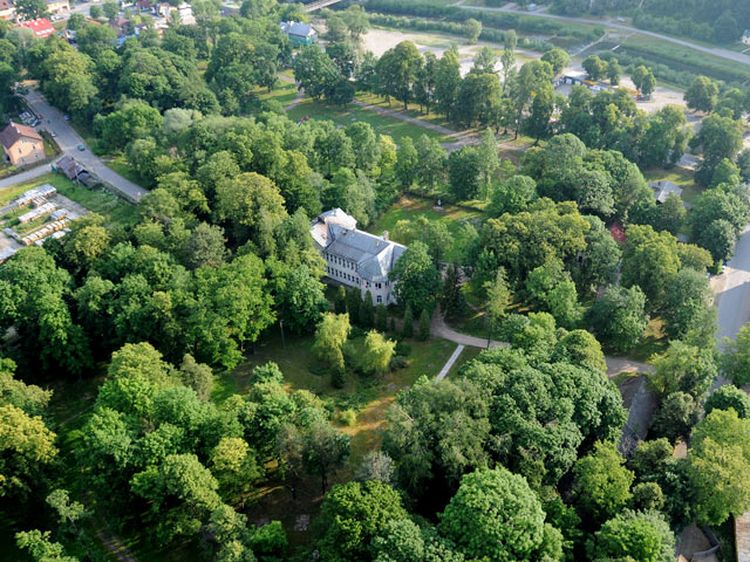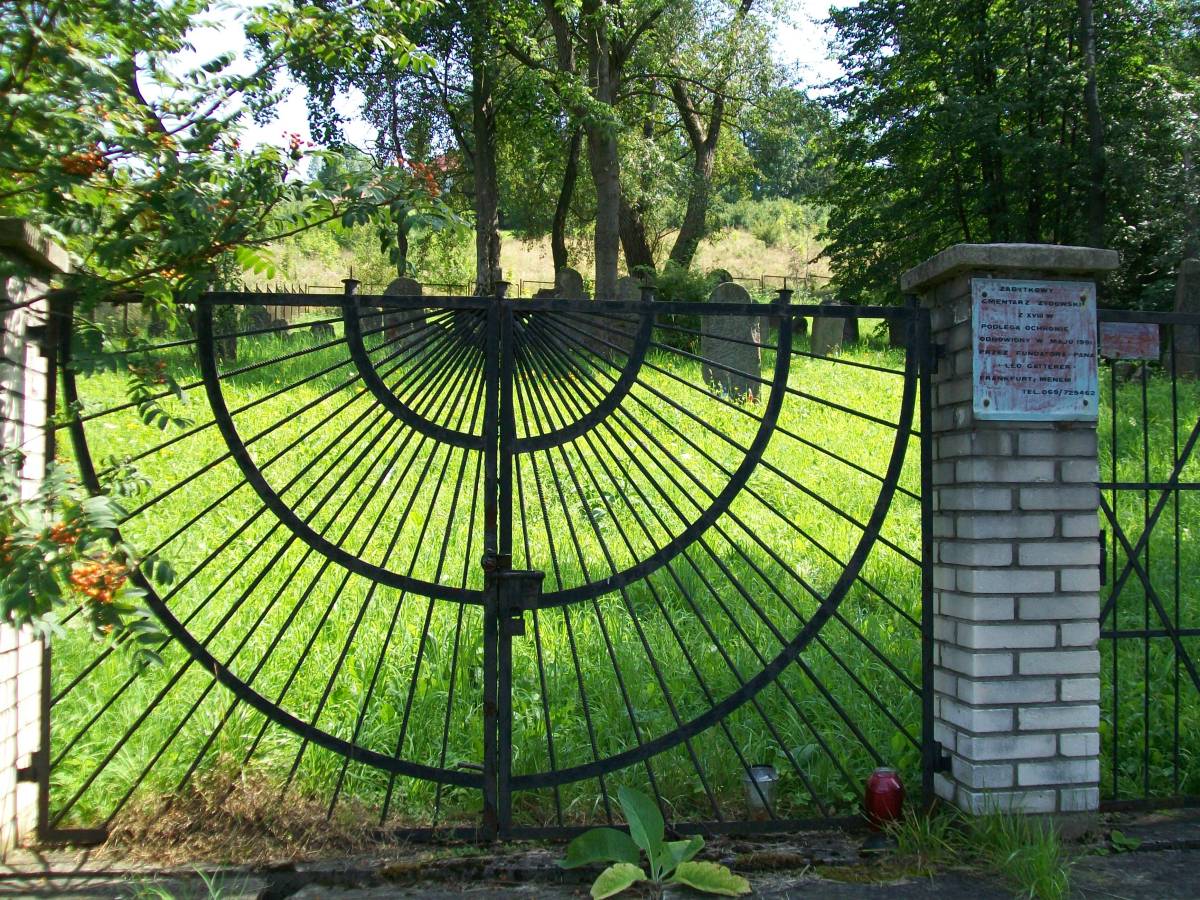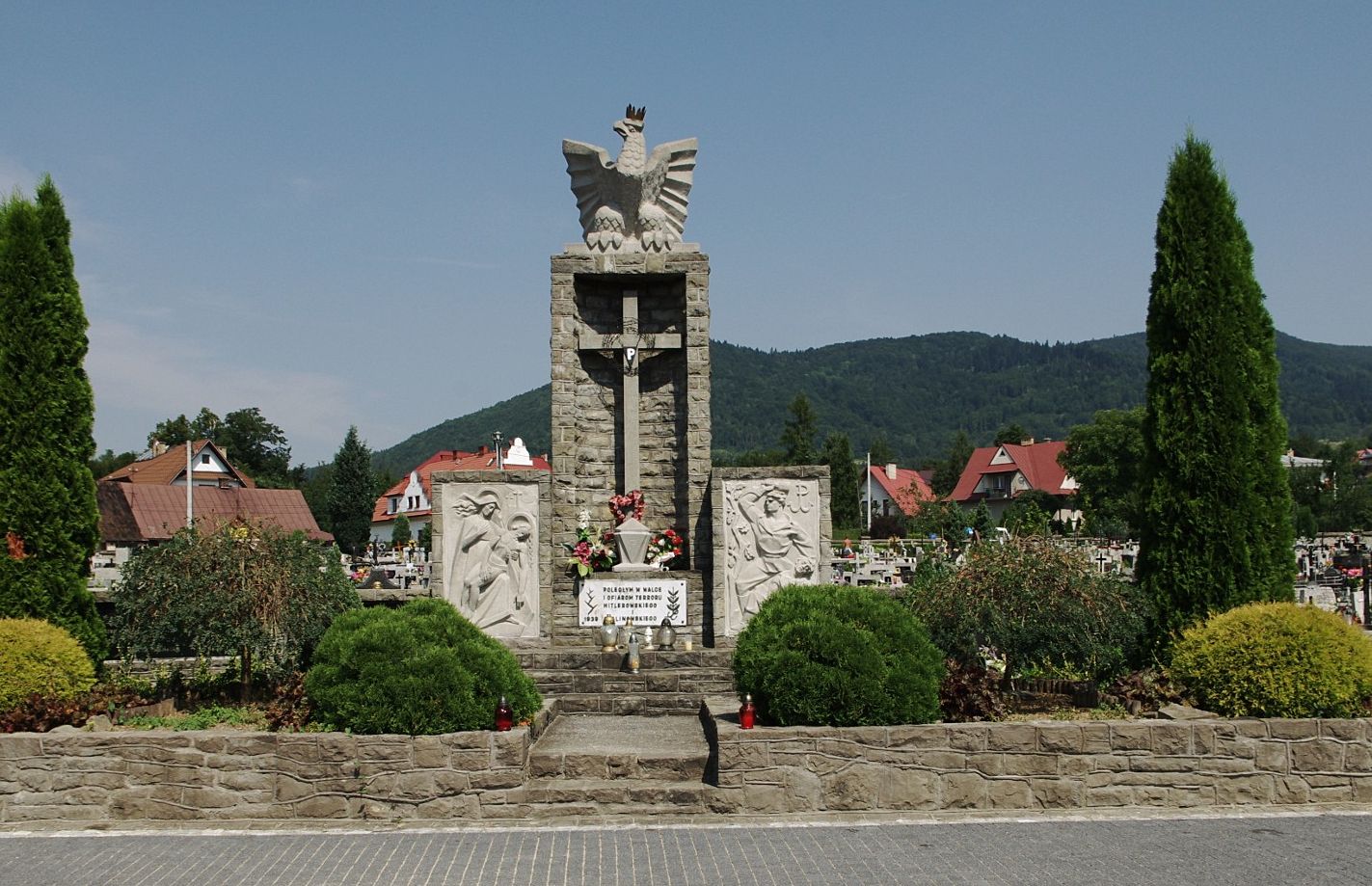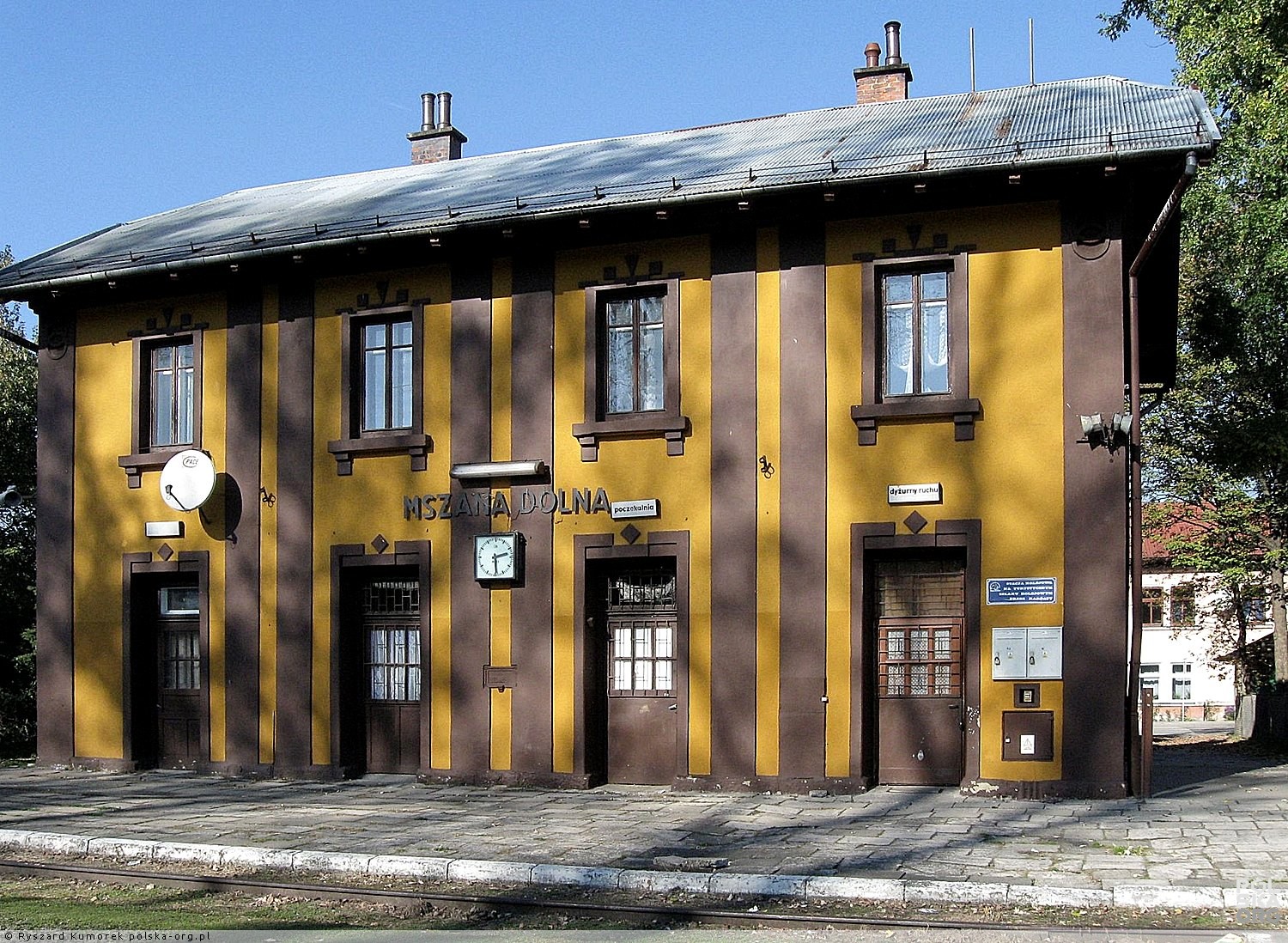
Do you know this country - with its picturesque situation, charming landscapes, emerald meadows, the sun rising and setting against the panorama of the Beskid Wyspowy and the Gorce mountain ranges, freshness of climate, monuments, local folclore, and the traditional Polish hospitality, admired every day by the tourists and by the local people?
In this place, everybody will find something for himself - rustling leaves, murmuring mountain streams, singing birds, gentle hills, overgrown in their upper parts with rich forests, meadows, and fields, 'golden with wheat, silver with rye, decorated with green ribbons of boundary strips', as a poet describes it. It's here, in the Mszana Dolna commune, relatively easily accessible mountains surrounding the villages (Mszana Górna, Lubomierz, Łętowe, Łostówka, Kasina Wielka, Kasinka Mała, Glisne, Raba Niżna, and Olszówka) along with a varied earth's sculpture and rich vegetation create great conditions for development of tourism, recreation and various forms of active rest.
Mszana Dolna is situated mostly in the mountain range of the Western Karpaty, partly in the western Beskid Wyspowy and in the northern Gorce.
On the grounds of the commune, there are most of the greatest peaks of the Beskid Wyspowy - Luboń Wielki, Szczebel, Lubogoszcz, Śnieżnica, Ćwilin, Jasień and Kudłoń famous for a variety of rock formations unusual for the Beskidy - crags, towers, and cudgellike rocks of hard sandstone.
Mszana Dolna - worth visiting
 |
Tytuł 1 |
CHURCH OF ST. MICHAEL ARCHANGEL
(John Paul II street)
This Neo-Gothic style building was erected between 1891-1901 and designed by an architect from Krakow, Vincent Wdowski (Wdowiszewski).
The most interesting parts of the church's interiors are:
• A painting on board representing the Dormition of the Virgin Mary from the 16th century
• A stone stoup from the 17th century
• The image of St. Augustine by Simon Czechowicz from the 18th century |
 |
Tytuł 2 |
CITY PARK Count's Families hr. Krasinski
The park is a perfect open space for leisure activities.
The main avenue of the park is a good place for a walk, with benches all around for those who prefer a comfortable rest.
In the northern part of the park, the trees formed a sort of a maze which is very pleasant for a walk.
Among the trees, there is a memorial to the 1108 inhabitants of Mszana Dolna murdered during the Nazi occupation. |
 |
Tytuł 1 |
JEWISH CEMETERY FROM THE 18th CENTURY
Located on Panskie Pole in front of the "Marki" settlement, about 1 km from the intersection of the roads to Krakow and Rabka Zdrój, on the left side of the road to Rabka – after the railway tracks.
Renovated and fenced in May 1991 by the founder Mr. Leo Gatter from Frankfurt am Main, who was one of the few survivors of the ghetto pogrom in Mszana in 1942.
The keys to the gate of the cemetery are in the City Hall and in the house of Mr. Kotarba (the conservator of the cemetery) situated nearby. |
 |
Tytuł 1 |
PARISH CEMETERY
The most interesting parts of the parish cemetery are the following:
• A First World War cantoment, where 32 Polish, Czech, Hungarian and German soldiers who died during the campaign of 1914 were buried.
• The grave and memorial to the victims of the 1939-45 Nazi occupation made by a local artist, Wladyslaw Jania.
The memorial was financed by the inhabitants of Mszana to honour the Mszana inhabitants murdered by the Nazis (a list of 54 people). |
 |
Tytuł 2 |
RAILWAY STATION BUILDING
The building dates from the late 19th century and was created upon completion of the railway line from Chabówka to Sacz.
The construction of the railway line from Chabówka to Lviv via Mszana Dolna took place during the annexation of Austria and the first train on this destination was launched in 1884.
• During the First World War, the railway station served as a hospital for the Austrian military.
• After the inauguration of the railway line, the railway station building was occupied by the so-called "Konsumy" - a cheap grocery store for railway workers. |
Around Mszana Dolna
KASINA WIELKA
Kasina Wielka - about 8 km from Mszana Dolna (can be reached by train or by bus), a holiday village on the upper course of the stream Kasinczanka. It is a very nice location at the foot of Snieżnica and Lubogoszcz at 480 to 570 m above sea level.
The railway line built by the Austrians in the nineteenth century (the former line Chabówka - Lviv) situated at 570 m above sea level has the highest railway station in Poland. This is why it was used by the famous American film director Steven Spielberg when filming some sequences for his "Schindler's List" in May 1993.
In Kasina Wielka, on the border with Mszana Dolna, a very interesting sculpture gallery "Tribute to Karpaty" was opened in 21 May 1999 by an artist-sculptor - Stanislaw Dobrowolski.
One of the precious monuments of Kasina Wielka is a wooden parish church from 1678, renovated in 1760, which belonged to the Dominicans from Cracow until 1811. Below its wooden tower, there are remnants of the old ceiling with late baroque paintings. In the church, there are also altars from the late baroque (19th century) and a baroque baptismal font. Among the baroque elements inside the church, there are statues of Virgin Mary and John the Evangelist from the 19th century
Two regional groups are active within the church. They cultivate traditions of "Kasinianie" and "Zagorzanie". There is also a brass and a folk band of Piotr Lulka.
KASINKA MAŁA
A large summer resort village, occupying both banks of the river Raba and the valley of the Kasinka stream, at the foot of Szczebel (977 m) - from the west, Kiczory (726 m) - from the north and Lubogoszcz (967 m) - from the east, near the road to Mszana Dolna - Lubień.
The village was founded by King Kazimierz Wielki and until the end, i.e. until the first partition of Poland, remained a royal village. Traditions of anti-fedol fights distinguish Kasina from the other villages in the area.
During the interwar period, Kasinka’s peasants rebelled against the exploitation of remedial authority. In 1937, a large peasant strike took place, during which nine peasants were killed by the police. To commemorate this event, a stone memorial was erected in the village. Jan Wiktor described this strike in his famous novel "Breaking Dawn" (Przed świtem).
In the brick church of Kasina, from 1911, there is a valuable Baroque and neo-Gothic altar representing Our Lady of Czestochowa and Baroque statues from the 18th century.
Next to the primary school n°2, there is a local stadium LZS "Zenit". The village also has a brass band which always performs during regional and local festivals in traditional costumes.
LUBOMIERZ
Situated about 10 kilometers from Mszana (easily accessible by bus). It is a holiday village located in the valley of the streams Lubomierski and Rosochy, which form there the river Mszanka. The road from the village goes up to the col Przysłop (693 m) offering a beatiful view on the valley of Kamienica.
In the 17th century, there was a farm producing cereals. On the way to Przysłop, at approx. 660 m above sea level, there was a site producing window panes, glass panes as well as glass bells during the second half of the 19th century (1791-1890).
The novel of Wladyslaw Orkan, „W roztokach” takes place in Przysłop. Local storytellers also talk about their compatriot, a robber named Sulphur, who lived there in the second half of the s17th century. As they claim, he was convicted and killed in Nowy Sacz. A field on the southern slopes of Kudłoń (1276 m) was named after him and is called Polana Siarkowa (Sulphur field).
In Lubomierz also lived the famous "magician Bulanda" described by Dr. S. FLIZAK and J. Fudala in their works.
Lubomierz has several historic chapels, as well as many beautiful and original typical mountain houses.
In particular, there is an ancient chapel with a rectangular roof from the 18th century, which belongs to the Lubomirski endowment.
GLISNE
(About 634 m above sea level) – a col and a summer village, located between Szczebel (976 m) in the north and Luboń Wielki (1022 m) in the south. The village is situated next to a local road connecting Mszana Dolna with Tenczyn.
There is a beautifully situated Church of the Sacred Heart of Jesus with a wooden sculpture of the "Last Supper" (made by a local artist) and a Chapel of Our Lady of Fatima.
OLSZOWKA
(425-580 m) – a holiday village (approx. 1600 inhabitants), on the northern slope of Gorce - between Rabka and Poreba Wielka. It stretches along the stream Olszówka in its deep valley - right-bank affluent of Raba.
In the south, there is Szumiąca (848 m), Krzyżowa (779 m) and Ostra (765 m).
On the "U Krausa” farm, there is a brick chapel with a shingled roof, a tower from the beginning of the 19th century and a a statue of Jan Nepomucen.
In Olszówka was born a local, well-known poet and painter on glass - Jan Fudala ("Jasiek from Gorce").








